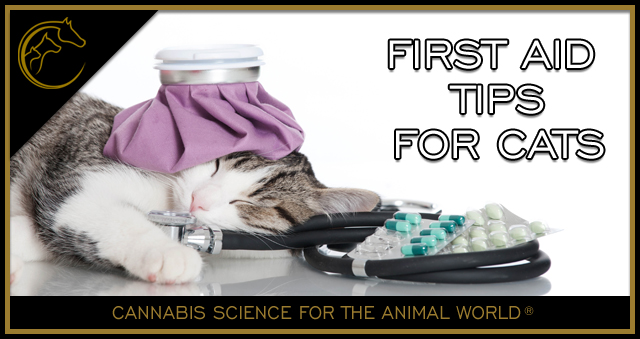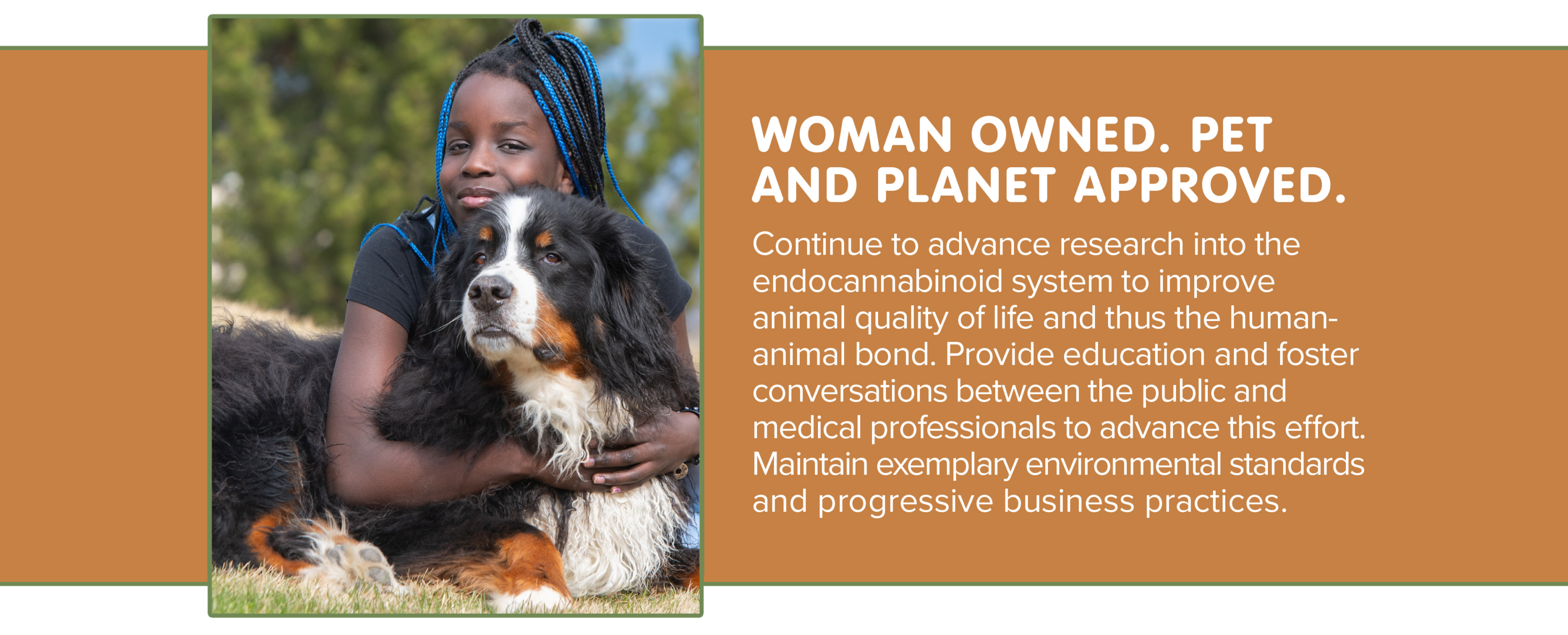First Aid Tips for Cats
We always hope that we won’t face an emergency, but it isn’t something that can ever be guaranteed. In the event that we do, though, a little first aid knowledge can go a long way. It is especially important during times where there is a lot of change, such as the holiday season. There are numerous threats that our feline friends face during this time such as potentially toxic decorative plants, ribbons and other gift wrap, bones from a holiday meal, and burns from candles or Christmas lights. (Quick tip: keep your cat away from packaging until all ribbons are thrown away in a cat-proof trash bin; bones should go in there too before letting your cat enjoy the festivities.)
The best thing we can do to protect our feline friends in these circumstances is to be prepared.
- Make sure you always have the number for your regular veterinarian and for the closest emergency vet clinic posted in an easy to find place, as well as affixed to your cat’s carrier. Consider making this a laminated card or luggage tag, which includes hospital name, regular doctor’s name, hospital phone number and physical & website addresses. On the other side, have your cat’s information: name, age or date of birth, breed, sex, known conditions or special handling needs, and medication/supplement list.
- The Red Cross offers an app which provides first aid information which you can download here. This app provides quick access to first aid information for your cat.
- Have an emergency kit ready to go, and keep it next to your cat’s carrier. Be sure to include food, water, and other items that they would need in the event that you had to evacuate.
What to Include in Your Cat’s ER Kit
In addition to medical information, have a minimum of 3 days worth of basic supplies: collapsible food & water dishes, favorite food & treats, unopened bottle of water, security items (soft blanket, toys, catnip), pee pads (accidents happen!) and cat litter box (plus litter). If your cat eats raw food, always have an unopened package in the freezer which you can quickly grab and place in its own insulated container. Having a few cans of high quality cat food or favorite freeze dried raw food mix may also be a good idea.
Include a list of what symptoms might indicate ingestion of a commonly found toxic substances like mistletoe, lilies, acetaminophen, and antifreeze. A cat who has eaten something toxic may exhibit signs such as lethargy, drooling, tremors, vomiting, dilated pupils, and more. Contact your veterinarian or local veterinary emergency hospital immediately in the event that you think they might have ingested a toxin. If you are able, inform them what was consumed, when it was eaten and how much you think they ingested. They may advise you on how to induce vomiting or they may recommend you come straight to the veterinary hospital, depending on how far your pet’s symptoms have advanced.
In a smaller, labeled, container within your kit, include items like medications, supplements, rescue therapies, non-stick bandages, nitrile gloves, and an unopened bottle of artificial tears (great for flushing out eyes and wounds). Talk with your veterinarian regarding which medications should be on hand for your cat’s specific needs. For older cats, this may include supplies for fluid therapy, preventatives for feline herpes viral flares, and additional support for older joints.
Multipurpose Supplements
- Honey: in the event that your cat experiences a burn, it is important to note what burned them (candle, stove burner, electric cord) and get them veterinary care as soon as possible. That said, there are a number of steps that one may take on their own first, particularly with thermal burns. It is vital to remember to cool them slowly, as doing so too quickly can cause shock.You can run cool water over the burn or use covered cool compresses. Never apply cold compresses or ice without wrapping in a towel first. If possible, shave the fur around the burn so it’s easier to treat and monitor progress. (This may be easier done at the vet’s office after pain medications are administered.) If the wound is not too painful, clean with warm soapy water, pat dry and apply Manuka honey. Honey has been used for thousands of years in wound care and is safe for cats. Make sure to cover the burn with a moist cloth when you are transporting your cat to the veterinarian, to keep the area clean and cool.
- Hemp supplement: the stress of holidays, people coming over or having to travel can be lessened with calming supplements like hemp derived CBD. When supported the endocannabinoid system (ECS) excels at managing temporary stressors. Your cat’s ECS is in high gear during these times and giving a dose of hemp oil 2-3 times daily should help him feel calmer. If your cat is already taking capsules, you may need to increase the dose or give hemp oil in addition to his maintenance support. Contact us if you have any questions; we’re happy to help you with your cat’s individual needs.
- Essential oil blend or kit: yes, essential oils can be used safely in cats, helping providing another layer of immune system support (for wounds) and calming effect (for anxiety), among other health benefits. Make sure to choose oil brand which source and extract responsibly. A drop of lavender oil around wounds can assist in microbial control, while blends containing chamomile provide soothing effects. If you want to learn more, these resources can get you on the right track: First Aid with Veterinary Medical Aromatherapy (great to have in your first aid kit) and Animal Desk Reference II (very detailed).
- TCVM or other herbal blend supplements: if your cat already takes such supplements, be sure to pack them in the kit. If not, contact your holistic or integrative veterinarian and ask which first aid herbal blends they recommend. American Holistic Veterinary Medical Association’s Find a Vet function can help you find a holistic practitioner in your area.
Traveling with Your Cat
Traveling with your feline friend, whether going to the veterinarian or visiting friends or family, can be stressful. It is safest to have them in a kennel or carrier, with soft bedding or a pad to lay on. Ideally the kennel should be seatbelted in the back seat (like you would a child’s car seat) and many kennels and carriers have a place to secure the seat belt. It is not safe to have your cat roaming freely in your vehicle while you are driving. Your cat could become frightened and dart under the brake pedal or accelerator, possibly causing an accident. In addition, having a free roaming the vehicle is a dangerous distraction. Experienced feline travelers can wear a harness or seat belt harness. It is a good idea to make sure the lead or leash is short enough that if you have to stop, your kitty will remain in the seat.
Make sure your destination is either cat friendly like these hotels, or that you’ve spoken with your host about your cat’s needs. In general, keep your cat in the room in which you’ll sleep. Set the room as best as possible to a layout similar to one at home — anything which is familiar will greatly reduce your cat’s stress. Most of these security items can be included in your ER kit. In addition to providing familiar smells, keeping your cat in one room gives her a place to hide from curious children and pets … and from bolting in an unfamiliar environment. Just in case, have your cat microchipped prior to travel if this wasn’t done earlier in life.
Please seek veterinary care as soon as possible following any use of first aid. They can guide you on next steps and place the whole incident in your cat’s medical records. Take notes regarding what therapies were provided and when they were administered. This will ensure that your feline friend receives the best care and is able to recover with less risk of additional complications. Emergencies and accidents may be unavoidable, but you can help your cat get through such tough times with a little knowledge and preparedness.





